

The Problem(s) With Mission Trips
My mission trip story.
I credit my first mission trip for changing my life. It was a one-week visit to the Dominican Republic that I did in college with my church.
I was already obsessed with travel and enamored by learning languages, but before that trip, I wasn’t sure if travel to developing countries would be for me.
Riding out to a Haitian-Dominican squatter community in the back of a rickety Daihatsu flatbed truck with twenty members of our team, I remember feeling so alive. The bumpy dirt road was below us, the warm wind slapping around our hair, palm trees on either side of the road, and bright blue skies above.
The experience was not all warm and fuzzy, though. It was very eye-opening . And it definitely took me out of my comfort zone to walk into a community of make-shift shacks, no plumbing or sewer system, with snotty-nosed, half-naked kids wanting to hold my hand.
But I went with it. And by the end of the week, what had once felt weird and different was no longer so scary .

The organization who hosted us was in need of a summer intern to help coordinate all the short-term American teams that visit during their busiest season. It would be the first time I experienced my “sweet spot”: where my passions and talents combined to help meet a need .
Because of that one-week mission trip, I signed up for the summer internship (two years in a row) , taught myself Spanish, and embarked on a life-long journey to learn more about how to change the world for the better.
I don’t deny that my mission trip experience was powerfully beneficial.
But notice who benefited: me.
Now, more than a decade later, I wish I knew then what I know now.

Youth workshop, Dominican Republic 2006
Why Mission Trips Often Fail to Alleviate Poverty
I think a lot of people are under the illusion – my past self included – that short-term mission trips to developing countries will solve a problem or “fix” things. In most cases, we have good intentions and want to be helpful . But what we don’t realize is the following:
1. Poverty is complex
Poverty is about much more than a lack of material goods. It’s about a lack of choice and not being empowered to live up to your potential. Poverty is caused and perpetuated by a whole complex system of factors, including political corruption, unfair international trade laws, environmental degradation, illiteracy, and the list goes on. All that to say: there is no magic, silver bullet solution.
Treating one of the symptoms of poverty – the lack of material resources – by providing food, handing out blankets, or constructing buildings may be necessary in a dire emergency. But in terms of long-term development in a community, it can actually be harmful.
2. The poor are not helpless
Although those of us in the developing world who are going on these mission trips may be better off in a material sense, it’s really important to realize that we’re not “better” than the people we’re trying to help . And the poor are not actually helpless.
Rather, every person possesses undeniable human dignity and every person has something to give. Wisdom, experience, resilience, creativity – these are important assets that don’t require material wealth.
The “White Savior Complex” is a dangerous side effect of many mission trips. We don’t realize that we love to play “savior” or Santa Claus, which is highly disempowering and even belittling to those being helped. It may give us instant gratification to hand out toys, but it ignores the long lasting consequences.
Despite our good intentions, we’re actually promoting dependence rather than empowerment , perpetuating an unhealthy dynamic where the benevolent, rich foreigner is savior and the materially poor person is helpless.
3. We are not all that helpful
With the exception of trained experts who have resources to meet pressing needs that a community cannot meet for themselves (doctors in communities without healthcare are a prime example of this), the work we do on a short-term mission trip is rarely as helpful as we think it should be.
Most of us participating in mission trip projects are not actually the best equipped people for the job . I don’t say this as a put-down, but it’s important to realize for three reasons.
One, when we’re doing work “for” someone that they can do for themselves, we’re disempowering that person.
Two, we’re often only there for a week , so our ability to make a lasting impact is severely limited.
Three, when we travel to another country, the true experts are the local people who have grown up in that community. They know what’s effective and how things work in their culture. They are the ones who need to have “buy in” because they’ll be present for the long-haul to follow up and make the project sustainable.
A more effective way to alleviate poverty is through long-term, sustainable programs that work alongside and empower community members to help themselves . Mission trips can play a role in these efforts, but it absolutely must be done intentionally or else it can quickly become more harmful than helpful.
A Better Way: Examples of Healthy Service and Ministry
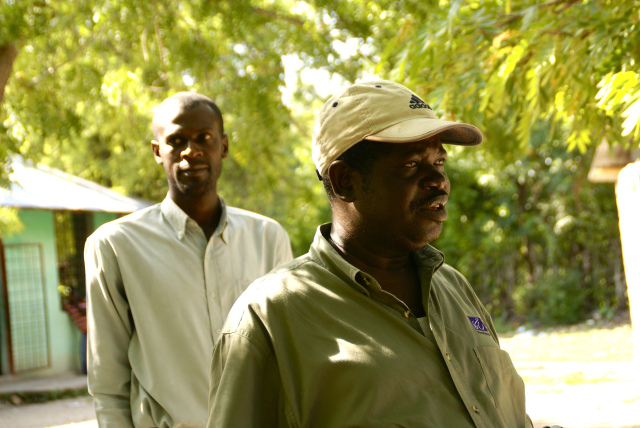
Haitian leaders sharing about the community, 2010
After Jedd and I got married, the first mission trip experience we did together was in Haiti. Rather than being service project-based, the trip to Haiti was called a “vision trip.” Our main focus was to see and learn about what was already going on in the community.
The trip leaders introduced us to a very impactful book called When Helping Hurts: How to Alleviate Poverty Without Hurting the Poor and Yourself . (This is where many of the points above came from. I also wrote about the main principles here .)
We were really fortunate to have this experience with an organization that exemplifies empowering, sustainable development: Haiti Foundation of Hope .
Another organization that has a great model for mission trips, which they call Delegations, is Witness for Peace .
Each organization has unique strengths, but together they’ve given us a beautiful picture for how to do short-term trips effectively. Here are some examples:
1. Leadership comes from host country nationals
Haiti Foundation of Hope is adamant about empowering local leadership , a Haitian Pastor and his wife who have dedicated their lives to the poor in Terre Blanche, Haiti.
Although resources like medical supplies and funding for the school come from the US, it all flows through the local church.
If a visiting American doctor wants to pay for a patient to get treatment in the capitol, the Haitian Pastor has final say and the gift is not given directly from doctor to patient, but rather comes through the community church.
As a result of practices like this, it was apparent that the village of Terre Blanche had hope. Unlike the other areas of Haiti we passed through, we didn’t experience any begging there. If they had a need, they knew they could go to their own community leaders – people who were there for the long-haul.
When it comes to long-term development, every effort should be made for nationals to play a central role in assessing their community’s needs, planning and implementing solutions, and reaching their potential as human beings.
2. Short-term teams are there to witness and to learn
With the serious problems I’ve called out earlier in this post, you might assume that I think short-term trips are not worth it. That’s actually not the case. In my own story, this kind of travel changed my life . And that kind of transformation is really valuable.
Witness for Peace delegations in Latin America use their trips to visit places like the Free Trade Zone factory where North Face jackets are made and the city dump where people eke out a living picking out recyclables.
Witness for Peace sets up meetings with local community leaders who are protesting the use of dangerous gases on banana plantations or who have developed a grassroots health education program for their neighborhood. They arrange home stays with coffee plantation workers in a tiny mountain village where the alarm clock is a gaggle of roosters and dinners are cooked over open flame.
Let me tell you, I learned more in that three week Witness for Peace trip to Nicaragua than I have in any class, ever. I’d be willing to bet that almost every single one of the college students I went with would tell you that it was one of the most impactful things they’ve ever done .
3. The trip is just the beginning
A short-term trip is just a blip on the timeline of life. The real magic should happen when you get home. After you’ve had your transformational experience, it’s time to do something about what you’ve witnessed and learned .
Witness for Peace is great about this because they spend a lot of time at the end of the trip doing advocacy training and creating an action plan for when you go home .
(Side note: Most organizations that receive short-term mission trips will probably tell you that the primary value of their teams is not the work they do during the one week they visit the country but rather the fact that those people tend to become long-term supporters of the organization’s work.)
There are so many ways to magnify the impact of a short-term trip. Understanding how our own nation’s policies impact developing countries means we have a duty to be informed citizens and use our influence as voters.
Understanding how some of our life choices impact workers in developing countries means we should make intentional choices about the products we consume and the brands we support.
Understanding the history and culture of a new place means we can become ambassadors to people at home who haven’t shared our experience . These are ways we can make a difference from home, for the rest of our lives.
A transformational trip should inspire us to become life-long learners, advocates for justice, better global citizens, and long-term supporters of organizations who are doing empowering, sustainable work.
Much more than the impact of a one-week service project, the true benefit of a “mission trip” should be a life transformed and the ripple effect brought about by that new perspective.
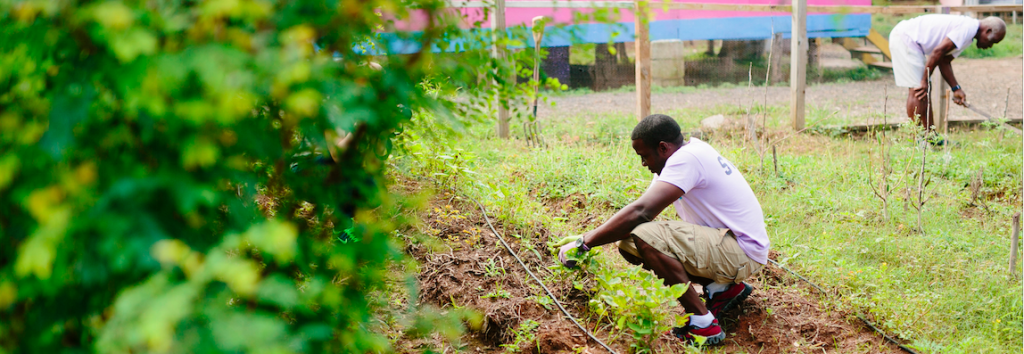
Jamaica. Photo credit: Dreamspace Collective
Understandably, this could be a controversial subject for some folks. My intention is not to bash on mission trips (again, I credit them for changing my life) but rather to offer some perspective and challenge all of us to be better.
When we want to be helpful in the world, it’s not enough to have good intentions.
We need to ensure we’re participating in sustainable, empowering, effective, truly helpful work with a humble, accurate view of our role in development.
What examples have you seen of positive or negative mission trips or international development? Do any of these arguments resonate with you or challenge you? I’d love to hear your constructive thoughts in the comments below.
Similar Posts
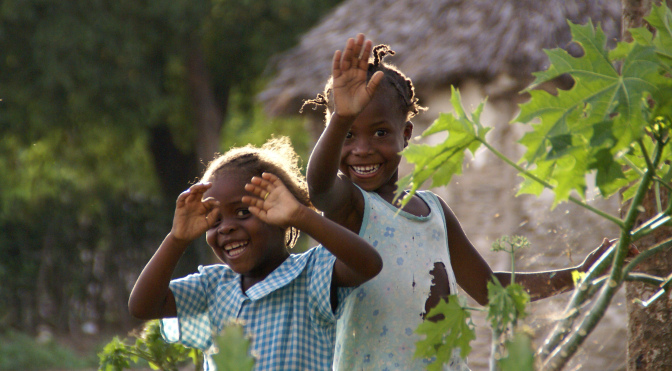
The People and Land of Haiti
Remembering Haiti 5 Years After the Earthquake Haiti’s magnitude 7.0 earthquake of Jan. 12, 2010, left 220,000 people dead, 300,000 injured and rubble nearly everywhere. (NPR.org) In the summer of 2009, Jedd and I had the opportunity to travel to Northern Haiti for the first time on a vision trip with Haiti Foundation of Hope. Being Jedd’s…
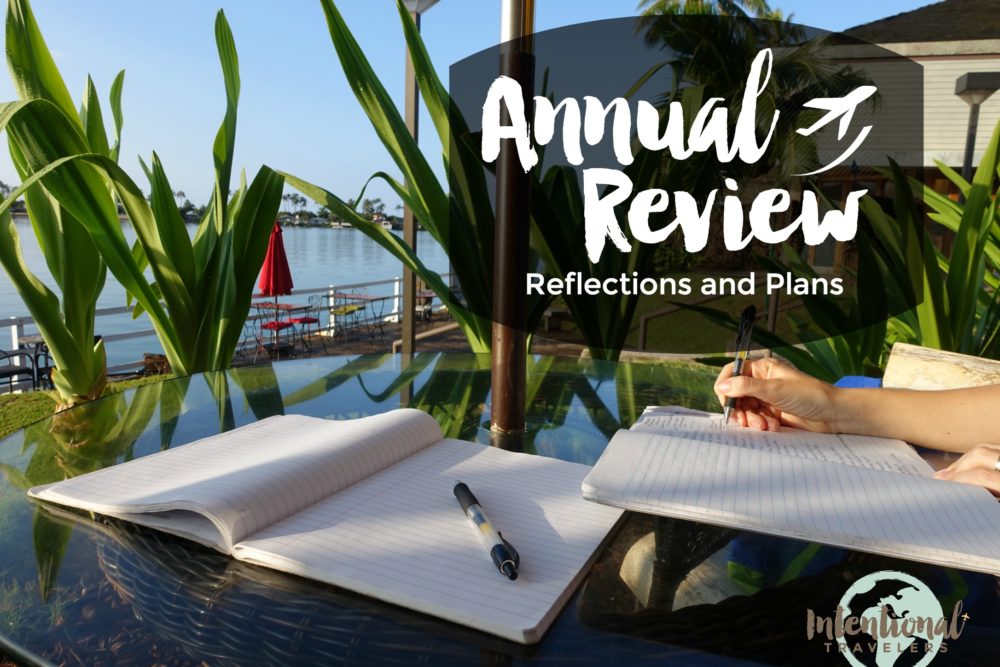
Annual Review 2015 and Looking Ahead to 2016
As the year comes to a close, it’s a perfect time to stop and reflect. For the past few years, we’ve really enjoyed the practice of doing an Annual Review because it helps us celebrate our victories, recognize areas for improvement, and start taking steps toward fulfilling our dreams. During our recent stay with Jedd’s brother in Honolulu,…

Beyond Vacation: The Value of Travel
If vacation is an escape from real life, then we propose that the real value of travel is about much more than taking vacation. To us, intentional travel has changed our lives. (When we first became digital nomads, we essentially gave up vacations. This is because we can work and travel at the same time….

Traveler Interview: Megan of Living Tiny, Dreaming Big
We connected with Megan, blogger at Living Tiny, Dreaming Big, through twitter. She is a tiny house enthusiast- a lifestyle concept we are fascinated by. It obviously requires intentionality to live in a tiny house! Meet Megan of Living Tiny, Dreaming Big In addition to being a writer, Megan has done everything from nannying to being a…

Traveler Interview: Marsha of World Within Her
This week’s traveler feature is Marsha of World Within Her. A Russian born in Lithuania, she now lives in London. She is passionate about responsible travel and eating healthy. Here’s what she shared in her interview: How did you get started with traveling? I started traveling with my mum when I was as young as 4 months….

Rules for Intentional Travel: Avoid Resorts
This post is part of our series, Simple Rules for Intentional Travel, by – and for – intentional travelers. Rule #3: Avoid Resorts I can’t recommend this enough. I know people are often concerned about safety and hygiene, but in my opinion, high-end all-inclusive type hotels just block you from the people and culture around you….
23 Comments
Thanks for your article. I am working with Christian Schools in Australia to help them re-think their traditional ‘mission trips’ and build a new strategy based around the ideas you’ve mentioned above.
Thanks, BD. We hope your project goes well.
I go to a Christian university and I’m researching missions trips. This article was very helpful in providing a balanced look at the effects. I’d like to know more about the connections between the local church and the US supplies. Would a US church get supplies from somewhere and then deliver it to the local church or do you all connect the local churches directly to your suppliers?
Thank you for visiting our blog. There are some good tips addressed in the book When Helping Hurts about supplies – I highly recommend checking it out. Generally, it’s best to support the local economy whenever possible by purchasing supplies within the developing countries. When that’s not possible, it’s more common to see the US church or NGO secure their own supplies (like medicine or surgical equipment, which can sometimes be acquired at a discount for missions) and pack them with the team that’s traveling. Again, I recommend reading the book to learn more.
Interesting takeaways here. I think for those that are going and planning these trips, we need to be focused on the longterm effect that can/should be achieved. The other thing is to note what in all reality can be harmful and steer away from those.
Thanks for stopping by! Yes, I think you summarized two very important keys to keep in mind. It comes down to treating everyone with dignity, which means trying to empower others above our own need to feel accomplished or helpful.
This is a really interesting and enlightening article. I work for a college study abroad program where we visit an East African country for one month every year. I have been looking into these types of arguments about short-term mission trips, and am aware of the notion that they do more bad than good. I have been evaluating our program in this sense and how to improve it by not promoting these negative effects. One of my main goals each year is creating lasting relationships with our local partners, and at the same time making sure we are working on projects that they have asked us to do. We bring resources such as school supplies and sports equipment, or providing funds that they do not have for projects that they need done. I believe our program is transformative for our students, and our partners are happy to welcome us back each year. I am worried about the negative effects it may have however. I have heard feedback that programs such as this are not beneficial to the sustainability of the communities we work with. Do you think activities such as this promote this dependency factor, and what is a way to change this? Is ending the program the solution, even if the organizations want us to come back? I am interested to hear your thoughts.
Hi Kelly. Thanks for writing and for putting thought into the program you have. I would highly recommend reading When Helping Hurts, if you haven’t already, as they are the real experts on this. I don’t think you need to end the program because cross-cultural exchange and mutual education is extremely valuable. Continuing an ongoing partnership is also valuable. Bringing resources and funding is the part that’s less sustainable, so you want to be sure these kinds of activities are building capacity and empowering people rather than just gifting to them. (Also note that purchasing supplies to bring from home builds that economy rather than the economy of East Africa.) There is no perfect way to do all these things but it’s good to be aware of the complexity of “helping” and to reduce your negative impact. It sounds like you’re on the right track.
I have a missions question that you may not have ever heard before, since I can find absolutely nothing about it online anywhere. So this is it:
I started my own ministry, “The Voice” Ministries( ShannonLeeDevotionals.com) in 2009 and have been promoting myself as much as possible both locally and online. Recently God made His desire for me to travel to Africa to teach known to me. And shortly after even put me in contact with pastors and ministers who have invited me to speak, teach, and pray with the people of their churches. A pastor in Rwanda said today, “When you come we shall rent big halls, organize revival conferences , leadership conferences and more, women trainings and more.” I have been offered my stay free of room and board. Only paying airfare.
Now it seems like this is unheard of or something. Because I can’t find any checklists of things I need to do on my own prior to leaving. I want to have everything I possibly can organized and ready. I want to do this properly so that I stay safe. Do you have any advice?
Hi Shannon. It sounds like doors are opening for you and invitations from locals are a good sign. In terms of being prepared, 1) I still highly recommend reading When Helping Hurts to prepare your mindset and approach, 2) To prepare for travel, search online more generally for packing lists and travel tips for the country you’re visiting – this information doesn’t need to be ministry-related to be helpful to you. Also, there are missions training schools and programs out there, often tied to a particular denomination. There are also countless missionary blogs where you could find other peoples’ experiences, although you may be right that no one has sat down and compiled a practical, comprehensive guide to help people prepare. It may not be online but something may be available in book form, I’m not sure. If you find a great resource, please let us know. All the best to you.
This article is very discouraging and absolutely negative. This article shoots down all hopes of even ‘good intentions ‘ to extending help.
Hi Kim. I see it differently. Our hope is that we’re aware of and avoid unintended consequences so that we truly can help each other. What would be discouraging, in my opinion, is to realize too late that my good intentions caused more harm than good. But it doesn’t have to be that way.
Thank you for this post! I have been leading trips to Southern Africa using the same philosophy you do. We are there to learn, engage and share not to “help”. The real work does begin when you return home and I have see this time and again on my trips. I would love to share this article on my website, is that okay with you? africanculturaltours.com Thanks for such a well written article!
Michelle, I was just searching for some updated resources related to the pitfalls of alternative break service trips (ala JoAnn Van Engen’s “The Cost of Short Term Missions) when I stumbled on this beautiful post. Thanks for synthesizing these important reflections and suggestions.
Thanks, Laura. I appreciate that, and hope you are well!
I leave in July for my first mission trip. Im not really sure what we are going to do on this trip yet but I am very hopeful that we are able to help someone in someway. I want to avoid being disrespectful to anyone and to avoid the pitfalls that some have fallen into. Thanks for the posts and any suggestions anyone wants to make would be appreciated.
Hi Gary. Thanks for stopping by and congrats on signing up for your first mission trip! Remember to just to get to know people on a human level and learn more about them. Hopefully the organization you’re going with focuses on projects that help local people to help themselves – and help you to learn and grow as well. Let us know how it goes!
Hey! I would really like to talk to you more about this topic! I am writing a research paper on the negative effects of short service projects. I believe there is some good to it but also bad, I want it to be tasteful and not speech lowly of people who go these projects but I also would like to shed some light on the effects they have on communities and what not.
Hi Felicia. Feel free to contact me at [email protected] . I would also highly recommend the book and corresponding we mentioned, When Helping Hurts, to get some more examples for your research.
Hi Michelle! This is an awesome post that explains so much about what each of us can REALLY do to help change the world. What I got out of this is the awareness that the real value of a mission trip is how it changes the person who goes on it. Wouldn’t it be wonderful if that were a “required” action for all young people in our country? Once we see how other people live and experience life, it does open up our hearts and minds to a different way of living. As you say, the poor are not helpless nor are they necessarily unhappy. We in the U.S. so often equate happiness with having money and stuff. I think when you see others around the world can and do live a good life regardless, it reminds you that so can we. ~Kathy
Kathy, I definitely agree that every young American should have some kind of cross-cultural experience outside of their “bubble” to help broaden their perspective. It could make a world of a difference in so many ways.
Having done four short term trips to Malawi, this is so very true. I’ve recently just finished reading “In Defence of the Fatherless” a book about orphan care which also raises very similar points about short term mission trips. It also addresses orphanages and intercountry adoption. A very challenging but worthwhile read.
Thanks for the book recommendation! I would be interested to learn more about the intercountry adoption aspect.
Leave a Reply Cancel reply
Your email address will not be published. Required fields are marked *
This site uses Akismet to reduce spam. Learn how your comment data is processed .
Skip the mission trip: they can cause more harm than good

Juana Garcia/The Cougar
Faith often calls people to humanitarianism. They love God so much that they want to spread his generosity everywhere.
Mission trips may seem like the answer to this call since they involve helping people in poor conditions, but they are not as humanitarian or selfless as they seem. They are typically self-serving, racist and can even be directly harmful to the people in the regions these trips go to.
It’s important to understand the connection between missions and colonization. Spanish missionaries were instrumental in America’s colonization, displacing indigenous people into missions, converting them and stripping their indigenous culture.
Similarly, in Africa , missionaries promoted western culture with Christianity so that European countries could gain power and strip the region’s resources, hurting the African population. Faith was used as a justification for this colonization.
Europeans needed to “save” these people, so they took their land and culture.
European missionaries believed they were doing the right thing and it’s no different today. However, mission trips are self-serving.
Boasting about selflessness
A mission trip attendee will often post pictures of themselves in Guatemala or Uganda surrounded by locals with a caption about how inspired they are and how the trip changed their life. The attendees’ posts center around themselves.
The locals aren’t named or talked about individually, but instead serve as props for the missionary’s self-promotional post.
Mission trips are also self-serving because they only treat symptoms of poverty without targeting the cause. This is usually because western nations are behind the cause.
Haiti, for example, has been hurt by the U.S . since the beginning. From the trade embargoes, to the military occupations, to the U.S. exporting their products ruining local Haitian businesses, the U.S. has always pushed Haiti into more poverty.
Targeting the cause could look like supporting Haitian businesses and lobbying politicians to stop exports to Haiti. But missions don’t have incentive to do this since that would mean no more trips.
Mission trips aren’t only self-serving, they can be downright harmful. All the money spent on sending missionaries could be given directly to people in the region.
If they need a new school, churches could use donated money to hire a local contractor to stimulate the region’s economy instead of sending missionaries to build it.
Mission trips don’t promote self-sufficiency , which impoverished regions should strive for.
Abusing power
Missions can be harmful in other ways. Renee Bach was a U.S. missionary with a faith based charity in Uganda. Her charity acted as a children’s hospital, but Bach had no medical training. This led to the death of 105 children in five years.
She felt entitled to help these children because God supposedly called her to it, but she killed them in the process.
Unfortunately, there’s also many instances of missionaries who turn out to be pedophiles and rapists. They use their image as godly, selfless people to get away with abusing those very children they claim to help, just like Bach did.
Mission work prioritizes western enjoyment over Black and brown people’s lives. It allows exploitative photos to be taken and posted online. It allows unqualified people access to “help” children, like Bach’s “hospital.”
Even if money helps more, it isn’t simply donated since that would take away the fun of a trip. In being self-serving, mission trips harm.
Some mission trips do educate members on respecting different cultures and try to protect locals from exploitation, but that doesn’t change the fact that mission trips are rooted in the harm of Black and brown people.
It also doesn’t change the fact that mission trips also aren’t the most effective at stopping poverty.
If you want to help people, maybe organize in your own community for the local people in need. You can organize fundraising events like car washes, bingo nights and auctions, so that fun, a reason people choose to go on these trips, is still a factor.
If you really want to help people in other countries, raise money and send it to people or organizations in that country. Real humanitarianism may not be as “Instagram worthy”, but it’s better in the long run.
Anna Baker is an English junior who can be reached at [email protected]
You may also like

Romantic relationship between SGA president and...

UH needs to stop tolerating radical extremist faculty...

The Pornhub ban is a serious threat to civil rights

Op-Ed: UH is trying to suppress pro-Palestine activism

UH should offer additional support for Honors STEM...

The Palestinian boycotts movement needs to be more...
Leave a comment x.

- Mission Trips
- Be an Intern
- Brazilian Jiu Jitsu
- :: Leadership
- :: Wayne & Megan Tingle
- :: Megan Chase
- What people are saying
- Enrich Missions :: Year of Impact
- Credit Card
Examining the Negative Effects of a Mission Trip: Balancing Good Intentions
Mission trips are often viewed as noble endeavors, driven by the desire to make a positive impact on communities in need. While the intentions behind mission trips are generally well-meaning, it’s essential to acknowledge that they can sometimes have unintended negative effects. In this blog post, we will explore some of the potential negative consequences of mission trips and how to mitigate them.
1. Dependency on Aid
One of the significant negative effects of mission trips can be the unintentional creation of dependency on outside aid. When communities become reliant on short-term assistance, they may not develop the self-sufficiency needed to address their long-term challenges. To mitigate this, mission organizations should prioritize sustainable solutions and community empowerment.
2. Cultural Insensitivity
Despite good intentions, mission trip participants may sometimes exhibit cultural insensitivity. This can manifest as misunderstandings, miscommunications, or even unintentional disrespect for local customs and traditions. Cultural sensitivity training for volunteers and ongoing education about the host community’s culture can help mitigate these issues.
3. Ineffective Use of Resources
Mission trips can be expensive due to travel, accommodation, and program costs. Some might argue that the financial resources spent on travel could be more effectively used by directly supporting local initiatives. To address this concern, mission organizations should prioritize cost-effectiveness and efficiency in their programs.
4. Short-Term Focus
Mission trips are often short-term, lasting from a few days to a few weeks. This short duration can lead to a focus on immediate relief rather than addressing the root causes of complex social issues. To counter this, mission organizations should complement short-term trips with long-term strategies that tackle underlying problems.
5. Colonial Mindset
In some cases, mission trips can unintentionally perpetuate a colonial mindset, where outsiders come in to “fix” or “save” a community. This approach can undermine the dignity and agency of the local population. It’s important to emphasize collaboration, mutual respect, and learning from the community.
6. Emotional and Psychological Toll
Mission trips can be emotionally and psychologically challenging, particularly when participants witness poverty, suffering, and difficult living conditions. Without proper emotional support and self-care, volunteers may experience emotional exhaustion or burnout.
7. Unrealistic Expectations
Mission trip participants may sometimes have unrealistic expectations about the impact they can make in a short period. Unrealistic expectations can lead to frustration and disappointment. Effective communication about the mission’s goals and outcomes is essential to manage expectations.
Mission trips have the potential to do immense good, but they can also have negative consequences if not approached thoughtfully and responsibly. It’s crucial to recognize these potential negative effects and take proactive steps to mitigate them. Mission organizations, volunteers, and communities must work together to ensure that mission trips result in sustainable, respectful, and positive outcomes for all involved. By addressing these challenges, we can strive to make mission trips more effective and beneficial to the communities they aim to serve.
Categories:
Comments are closed

TOXIC CHARITY-HOW MISSION TRIPS CAN BRING HARM
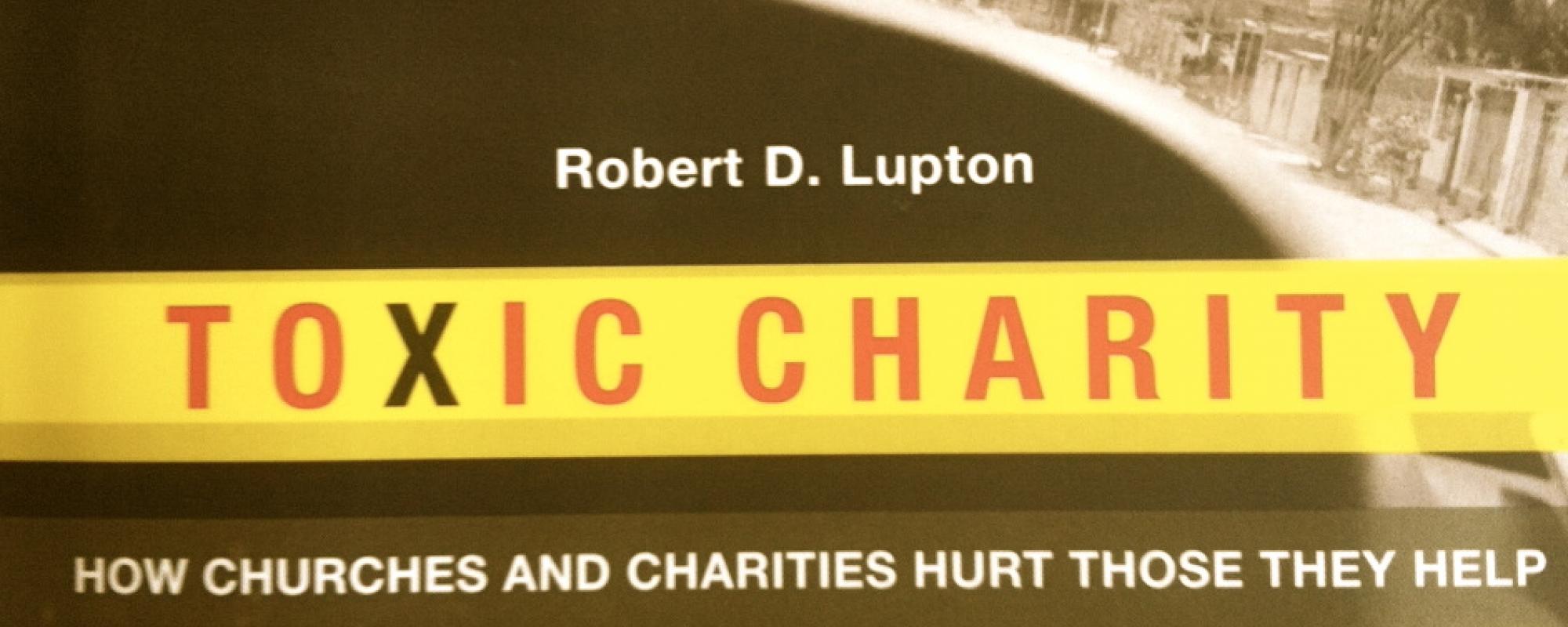
“Giving to those in need what they could be gaining from their own initiative may well be the kindest way to destroy people.” Bob Lupton is the founder and President of FCS Urban Ministries and author of “Toxic Charity-How Churches and Charities Hurt Those they Help.”
I first met Bob, though he would never remember me, when I was a young staff with Huntsville (AL) Youth for Christ back in the 70’s. I visited later with my friend Bill McDowell, Bob’s inner city Atlanta ministry. Bob had just moved his family to the inner city to live with the people that God had called him to love.
One of the first stories that Bob told us back in the early 80’s was about a toy drive done by a well meaning group of believers. At the function to pass out the toys to the children living in poverty were of course the church group and the parents of the children. As the church group handed toys to the children Bob noticed the faces of the parents. He could tell that their dignity had been stolen.
“The book explores principles along with practical case studies to examine how we practice charity,” Bob says in the opening chapter of Toxic Charity.
The book offers an “Oath of Compassionate Service.” The oath has six principles:
1. Never do for the poor what they have or could have the capacity to do for themselves.
2. Limit one way giving to emergency situations.
3. Strive to empower the poor through employment, lending, and investing, using grants sparingly to reinforce achievements.
4. Listen closely to those you seek to help, especially to what is not being said–unspoken feelings may contain essential clues to effective service.
5. Subordinate self-interests to the needs of those being served.
6. Above all, do no harm.
Over the course of 20 years of ministry I have seen the best and worst of church groups who have come to serve through us.
In Reynosa and Tecate, Mexico Mission Discovery teams have constructed over 1300 homes in the poorest parts of the city. Families were selected to receive a home after an economic study was conducted by the mayor’s office of each city we worked in. I remember a meeting with one of the mayors staff and her surprise when I required that an adult family member must participate with the team building the house. I explained that the dignity of the family was at stake, and that participating in the home’s construction was a must.
One week a team working on a house told me that the man of the house could loose his job if he helped in it’s construction. Construction hours conflicted with his work hours. In Reynosa, factory jobs are hard to find and there are usually many standing in line for each factory job. I explained to the team the reasoning behind our rule.
The resident told his boss he would be taking off work for 4 days to build his home. The next day he was fired. The team was devastated at the news. I was not a popular guy the morning the news came, but what happened later that day was amazing. The man of the house said, “This was a great job, but God is greater. He will care for my family.” He continued to hammer away with new determination and even pride! The team prayed with him, and there was a different kind of energy on that site. Later that week he found new employment.
We had a request from one of our pastor partners to help in the construction of a feeding center in a needy neighborhood in Mexico. The feeding center would provide meals for children who otherwise would not eat before going to school for the day. It would be fully staffed and paid for by the church. We suggested to the pastor that the top floor be a dormitory for camp retreats or mission teams working in the community alongside the church. The dorm would generate the money for the food for children. Some of our teams helped with the construction. Today the center is fully functional and self sustaining.
In Bulembu, Swaziland the missionary staff there have a policy for teams. The policy is that they allow nothing to be given away in the community. Swaziland has the highest rate of AIDS in the world and an orphan population of over 140,000. The staff of Bulembu Ministries purchased a deserted mining town to house 2,000 of these children. The town has created enterprises that employ people in town and these enterprises generate income that will one day make the town self sustaining. Places I’ve worked where mission groups have given away hats, sunglasses and bandannas, and more, have negatively impacted the community. The next team to arrive after gluttonous give-aways are swarmed with kids who immediately start grabbing at things on your body. The previous team trained them to do that. The white short termers were another round of Santa Clause! In contrast in Bulembu the children and town’s people simply greet you, “Hello Mister Maury, how are you today?” No grabbing at a pair of sunglasses. No playfully snatching a had. We work silently behind the scenes to help restore the town physically to house children in need.
“Toxic Charity” is loaded with stories of successes and errors of church and short term mission charity. I appreciate the approach of “learning and changing” that Bob offers.
Mission Discovery Pre-Field Orientation puts every team leader in touch with material that help prepare them for a trip that protects the dignity of the poor. Every staff member will tell you that they can spot right away the teams that have not prepared. Mission trips must be thoughtful and reciprocal.
We are often asked by pastors if we can organize a teaching trip for them, a mission trip where pastors from the U.S. teach pastors from poor nations. “Only if it is reciprocal. Only if you will sit as a student of a pastors who work in poverty,” is my response. Reciprocal, not “one-way” ministry brings not only dignity, but wisdom. The poor have so much to teach a pastor from the United States.
I would only offer one more suggestion to those who will serve on mission trips this summer not in Bob’s book: Where ever you serve, make sure you are connected with a trusted partner who lives where you will work. Not every short term mission trip agency does that. Connect with those who are able to identify not only the physical needs of those in their community, but the needs of the heart.
“Toxic Charity” a must read before your mission trip! Thanks Bob for good lessons learned.
Share This, Choose Your Platform!
Related posts.

Christian, You Need Help
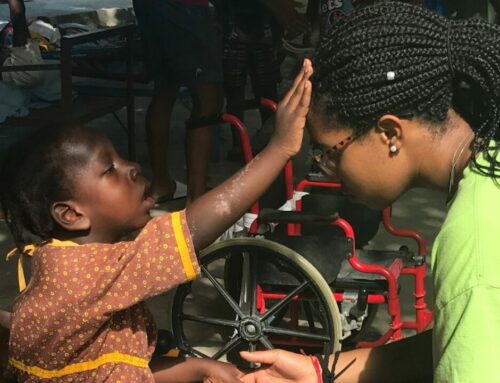
How You Can Help Haiti
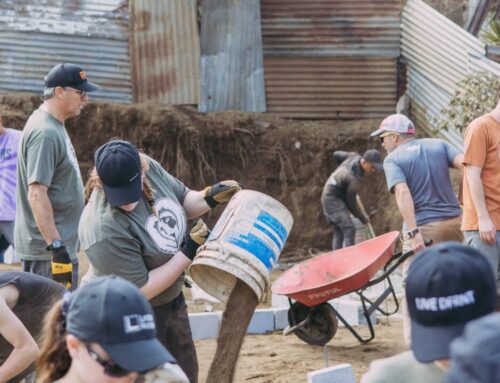
Stories of God’s Work in Our Mission Trips

How to Pack a Checked Bag for Your Mission Trip
place Dallas
7540 Lyndon B Johnson Fwy Dallas, TX 75251
In Person Sunday 9 AM, 11:15 AM, and 4 PM Streaming Sunday 9 and 11:15 AM SERVICIO DOMINICAL EN ESPAÑOL 11:15 AM
What If We Got It All Wrong?: The “Mission Trips” Controversy

What if we got it all wrong? What if God’s plan for the evangelizing the world does not include week long “mission” trips for North Americans to exotic places like Port-au-Prince, Haiti, Goma, Congo, or even South Dallas? What if short term mission trips do more spiritual, physical, and emotional harm than good for both those going to serve and those being served? What if we’ve built a church missions model that is not just flawed, but ineffective and unbiblical?
Always Ask the Question
While my knee-jerk answer to each concern above is to assume our model is useful, I believe strongly that my church (and every church) ought to be asking those kinds of critical questions about any program that results in deploying folks to other places, near and far. I say this because so often in ministry we slip into patterns of “doing missions” just as we have been “doing church” – because it’s been done a certain way for as long as anyone can remember. Instead of evaluating all aspects of a ministry, we settle for status quo and assume the above questions can be answered in a way that lets us off the hook.
And when it comes to short-term trips, which have been a popular form of “missions” for decades, many Christians are asking these very questions.
So how can we make sure our one-week, off-site deployments of our people should continue?
Back to the Basics
Over the past few years, we’ve developed some basic questions that we constantly ask to evaluate the effectiveness of sending folks on short term discipleship trips. (And even our use of the term “Discipleship Trip” arises from these questions.) This list of five questions provides us basic principles for evaluating our efforts:
- What did we do on the ground that provided real assistance to our partner and was an effective/strategic use of our team’s time? Why?
- What were the most effective parts of our Discipleship Trip preparation? Why?
- What could be improved in the preparation process so that our folks are better prepared to have an impact on the ground and upon returning home?
- What activities did we participate in that we don’t see as best use of the team’s gifts? Why is that? What can be done to improve them? Or should we scrap them altogether in the future?
- What have been the changes in the lives of those who served with us on a short term discipleship trip?
So what does this look like when these questions are really applied to our short-term ministry efforts? Are there tangible results from these trips that support the idea that discipleship trips make an impact?
The answer for Watermark is a resounding “yes” – with positive impact on both those who serve and those we serve.
We’ve found that four to six focused and planned preparation meetings for all trips, along with vetted and trusted leaders in charge of the trips, have greatly increased the impact of these trips for both our participants and our partners. Well-planned pre-trip meetings mean folks are memorizing scripture, learning about the culture they’ll be serving in, understanding how to handle conflict well, and going to serve with a heart focused on being a servant – instead of a tourist on a “vacation with a purpose.”
The Ingredients of a Healthy Trip
Well-planned trips… with godly leaders… to serve trusted, faith based partner organizations: these things go a long way toward ensuring that the time on the ground is well-spent. It also helps us make sure folks are using their gifts and talents to serve our partners in a way that provide a lasting impact and not simply a short-term fix.
So whether the trip is a serving trip to Haiti with Mission of Hope, a teaching trip to Central Africa with ALARM, or an evangelism trip to Ethiopia with E3 Partners, the plan and focus remains unchanged: ”Go and make disciples.”
For more on ensuring that short-term opportunities are effective and not harmful (whether you’re on a Watermark trip or not), we’d encourage you to see the new Helping without Hurting in Short-Term Missions guide by Steve Corbett and Brian Fikkert.
Contact This Opportunity
Please allow up to 3 business days for a response.
EWTN News, Inc. is the world’s largest Catholic news organization, comprised of television, radio, print and digital media outlets, dedicated to reporting the truth in light of the Gospel and the Catholic Church.
- National Catholic Register
- News Agencies
- Catholic News Agency
- CNA Deutsch
- ACI Afrique
- ACI Digital
- Digital Media
- ChurchPOP Español
- ChurchPOP Italiano
- ChurchPOP Português
- EWTN News Indepth
- EWTN News Nightly
- EWTN Noticias
- EWTN Pro-life Weekly
- Register Radio
Get HALF OFF the Register!
National Catholic Register News https://www.ncregister.com/blog/are-mission-trips-toxic-not-necessarily-and-here-s-why
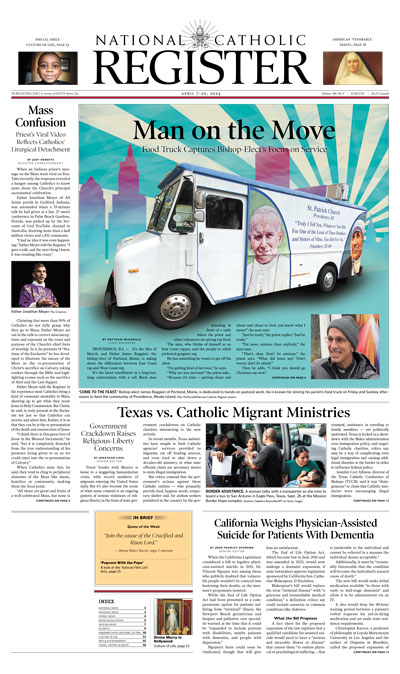
- Synod on Synodality
- Most Popular
- Publisher’s Note
- College Guide
- Commentaries
- Culture of Life
- Arts & Entertainment
- Publisher's Note
- Letters to the Editor
- Support the Register
- Print subscriptions
- E-Newsletter Sign-up
- EWTN Religious Catalogue
Are Mission Trips Toxic? Not Necessarily, and Here’s Why…
FOCUS seeks to realign short-term missions with the long-term mission of the Church

Some years ago an important book was published called Toxic Charity. Robert Lupton, a long time worker in America’s inner cities, took time to reflect on Christian charity to the poor, including the fashion for American Evangelical Christians to descend en masse on developing countries to help them on summer mission trips.
Lupton’s critique was devastating. He described ill-conceived mission trips that were little more than expensive vacations for affluent teens. The short version is that the thousands spent giving American youngsters a poverty tourism outing would be much better spent in direct development efforts for the poor. The visits undermined the local economy, flooding the labor market with free workers. It burdened the hosts in the poor country who had to provide accommodation, meals and transportation, and the educational benefits for the American teens was minimal.
As a high school chaplain I guided a few mission trips of my own to El Salvador and although there were definite benefits to the trips, I couldn’t help but agree with Lupton’s final diagnosis: mission trips were probably more trouble than they were worth. The investment was not worth the return.
I was therefore interested to meet Dominic Paolucci, the director of mission trips for the Catholic college campus ministry FOCUS. For those who are unfamiliar, FOCUS is a Catholic collegiate outreach whose mission is to share the hope and joy of the gospel with college and university students. Through Bible studies, outreach events, mission trips and one-on-one discipleship, missionaries inspire and build up students in the faith, sending them out to spread the gospel. Founded by Curtis Martin in 1998, FOCUS is now on 137 campuses in the United States, Austria, England and Ireland.
Paolucci explained that over 7000 college kids have gone out on over 400 missions to 50 countries around the world, and this year alone FOCUS will send out more than 2000 college aged missionaries.
Despite his enthusiasm, I challenged Paolucci about the idea of toxic charity, and he made an important distinction. Many of the mission trips were not about mission at all, but simply about giving material aid. I asked, “What about the idea that the money might just as well be spent on direct aid to the poor?” Dominic said, “I agree. That is, IF we are only serving their material needs. A true and effective ‘mission trip’ must serve not only the physical needs of the poor, but also their spiritual needs. Sharing the Gospel is a second and equal part of mission.”
Material needs of the poor can be met by anyone, and it make sense that the money spent shipping inexperienced American teens overseas would be better spent sending some professionals out to assist or to fund the nationals to do the work themselves. However, if there is a spiritual dimension to the work, the mission trip becomes much more personal and real. It is not just about houses and schools and hospitals and water wells, but about real relationships with people.
Dominic also had a good answer for the charge that the mission trips are a short, sharp shock and the poor return very quickly to their previous conditions and the American teens quickly revert to their self-absorbed lives. Paolucci replied, “Short-term missions alone are typically not the best way to carry out either of these aspect, which is why we always partner with long-term organizations who embrace serving in charity and truth. We can be a powerful extension of their of their work, and when we leave, people are not left on their own. Also, for our volunteers the mission trips are part of a long-term relationship of formation and Christian growth in discipleship.”
Mission work is part of the bigger picture of the Catholic Church in the world, and in the past Catholic missionaries were among the best in sharing the gospel and building the Church. However almost all Catholic work overseas is now reduced to peace, justice, health and education work. What did Dominic Paolucci think had happened to the great missionary movements in the Catholic Church?
I agreed with his response that the secular worldview has swamped us. Because of indifferentism and universalism too many Catholics have come to accept that all religions are equal pathways to God and that everyone, in the end, will be saved. Consequently we are now shy about sharing the exclusive claims of the Christian gospel.
So FOCUS missionaries are not simply going on mission trips to build houses, work in schools and do youth work. Evangelization and catechesis is also an important part of the work. This helps to counter the aggressive evangelism conducted by the Evangelical churches in the developing world.
Paolucci ended by outlining the many benefits for our own college young people. He explained that the overseas visit helps wake kids up from the affluent doziness, and with an authentic faith experience they start to get the right priorities in their lives. Instead of being distracted by the temptations of porn, drugs or drink a mission trip helps them see beyond shallow entertainment to a greater mission in life. This in turn leads them to spend more time in building their prayer life and building positive relationships with other Catholic young people.
With these conditions in place it’s clear that there is a positive and powerful place for mission trips in our work with young people. While mission trips can be “toxic” and counterproductive, when well thought out and planned properly they can be a great investment not only in the Church in the developing world, but also in the lives of our own young people here at home.
Fr. Dwight Longenecker Fr. Dwight Longenecker was raised in an Evangelical home in Pennsylvania. After graduating from college with a degree in Speech and English, he went to study theology at Oxford University and was ordained a an Anglican minister in England. In 1995 Fr. Dwight and his family were received into the Catholic Church. Since then, he has become a prolific writer and author of twenty books, including Catholicism Pure & Simple , Quest for the Creed and The Mystery of the Magi . In December 2006 he was ordained as a Catholic priest under the special pastoral provision for married former Anglican clergy. He now serves as Pastor of Our Lady of the Rosary parish in Greenville, South Carolina. Read his blog, browse his books and be in touch at dwightlongenecker.com .
- Related Stories
- Latest News

Missouri Governor Denies Clemency to Death Row Inmate Despite Catholic Protests
The Catholic bishops of Missouri had strongly urged the faithful to contact Parson and ask him to stay Dorsey’s execution, citing Catholic teaching on the death penalty.

Idaho Teen Arrested for Plot to Attack Churches, Kill Christians for ISIS
Mercurio was charged with attempting to provide material support or resources to a designated foreign terrorist organization and faces up to 20 years in federal prison if convicted.

Seton Hall University Names Priest President Following Resignation of Previous President
Msgr. Reilly will take over from interim president Katia Passerini, who took up the role after former Seton Hall president Joseph Nyre’s resignation in July 2023.

Baltimore Archbishop Attends Bankruptcy Hearing, Listens to Testimony From Abuse Victims
After the sealed hearing on Monday at U.S. Bankruptcy Court for the District of Maryland, Archbishop Lori said he was 'deeply grateful to the victim-survivors for their courage today [and] moved by their heartrending experience.'

Solemnity of the Annunciation: ‘The Angel of the Lord Declared Unto Mary’
ROSARY & ART: The First Joyful Mystery is the Annunciation (Luke 1:26-38)

How ‘True Devotion to Mary’ Changed My Life
How is Mary at the center of Christ’s path to the cross?

17 Forgotten Divine Mercy Revelations Jesus Gave Through St. Faustina
What Jesus told St. Faustina about Divine Mercy Sunday is well known, yet he described more of what we should know and apply.

New Album Pairs St. Faustina’s Poetry With Original Music
‘The Voice of Saint Faustina’ evokes the heart of the great Polish mystic.
‘Dignitas Infinita’: New Vatican Document on Human Dignity Condemns Gender Transition, Surrogacy, Abortion
Jessica hanna, catholic mother who chose life over treatment, dies after cancer battle, 13-year-old filipina who loved the eucharist is officially on path to sainthood, spiritual eclipse and the darkness of sin, woman born of surrogacy shares why she supports pope francis’ call for a global ban, ‘restore the glory’: catholic therapist-podcasters point the way to healing through christ, pope francis on divine mercy sunday: the ‘fullness of life’ is ‘realized in jesus’, vatican’s ‘dignitas infinita’ draws ‘clear line’ on gender theory, receives widespread praise, subscription options.

Subscriber Service Center Already a subscriber? Renew or manage your subscription here .
Subscribe and Save HALF OFF! Start your Register subscription today.
Give a Gift Subscription Bless friends, family or clergy with a gift of the Register.
Order Bulk Subscriptions Get a discount on 6 or more copies sent to your parish, organization or school.
Sign-up for E-Newsletter Get Register Updates sent daily or weeklyto your inbox.
The Enlightened Mindset
Exploring the World of Knowledge and Understanding
Welcome to the world's first fully AI generated website!
Are Mission Trips Bad? Examining the Pros and Cons of Missionary Work
By Happy Sharer
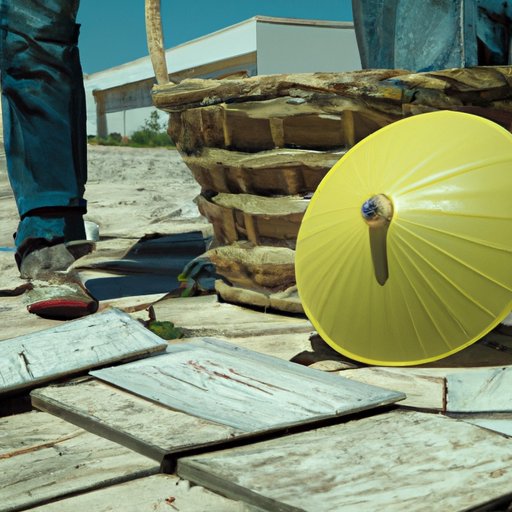
Introduction
Mission trips are popular among religious organizations, volunteers, and philanthropists because they offer a unique opportunity to travel and make a difference in the world. But what are mission trips and are they really beneficial? In this article, we’ll explore the pros and cons of mission trips and examine their potential impacts on local communities.
Definition of Mission Trips
Mission trips are short-term excursions that involve volunteers traveling abroad to provide assistance to people in need. The goal of these trips is to provide aid and support to those living in impoverished or developing countries. Mission trips usually focus on providing educational and medical resources, building infrastructure, and engaging in spiritual outreach.
Overview of Pros and Cons of Mission Trips
Mission trips can have both positive and negative effects, depending on the context and approach taken. On the one hand, mission trips can be beneficial by providing access to resources, creating economic development opportunities, and fostering relationships with locals. On the other hand, mission trips can also have unintended consequences, such as cultural misunderstandings, exploitation of resources, and displacement of local workers.
Examining the Pros and Cons of Mission Trips
Exploring the potential benefits of mission trips.
Mission trips can provide a variety of benefits to both volunteers and locals. Here are some of the potential advantages of mission trips:
Personal Growth
For many volunteers, mission trips can be a life-changing experience. By immersing themselves in a new culture and environment, volunteers can gain valuable insight into different perspectives and cultures. They may also develop a better understanding of global issues and become more compassionate towards others.
Spiritual Development
Mission trips often involve spiritual activities, such as prayer groups and Bible study. This can be an invaluable opportunity for volunteers to deepen their faith and explore their spirituality. It can also be a chance to share their beliefs with others and spread the message of their religion.
Building Relationships
Mission trips can provide an opportunity for volunteers to build meaningful relationships with people from different backgrounds. These connections can not only enrich the lives of volunteers, but also create lasting bonds between volunteers and locals that can help bridge cultural divides.
Investigating the Potential Drawbacks of Mission Trips
While mission trips can have many positive outcomes, there are also potential drawbacks that should be considered. Here are some of the potential risks associated with mission trips:
Unintended Consequences
Mission trips can sometimes have unintended consequences, such as disrupting existing social structures and displacing local workers. Volunteers should be aware of these potential risks and take steps to minimize them.
Cultural Misunderstandings
Mission trips can lead to cultural misunderstandings if volunteers are not familiar with local customs and beliefs. Without proper training and preparation, volunteers may inadvertently cause offense or disrespect local traditions.
Over-reliance on the Volunteers
Mission trips can also create an over-reliance on volunteers, as locals may come to rely on them for resources and assistance. This can be detrimental in the long run, as it can hinder locals’ ability to become self-sufficient and create their own solutions to problems.
Exploring Ethical Issues Surrounding Missionary Work
In addition to the potential pros and cons of mission trips, there are also ethical issues that must be addressed. Here are some of the key ethical concerns related to mission trips:
Exploring Issues Related to Power Dynamics
Mission trips can create power imbalances between volunteers and locals. For instance, volunteers may inadvertently displace local workers, impose their religious beliefs, or ignore cultural norms. To avoid these issues, volunteers should strive to empower locals and respect their autonomy.

Investigating the Impact of Financial Support
Financial support from mission trips can also be problematic, as it can create a dependence on donations and lead to exploitation of resources. Furthermore, financial support can create opportunities for corruption and misuse of funds. To prevent these issues, mission trips should strive to promote self-sufficiency and sustainability.
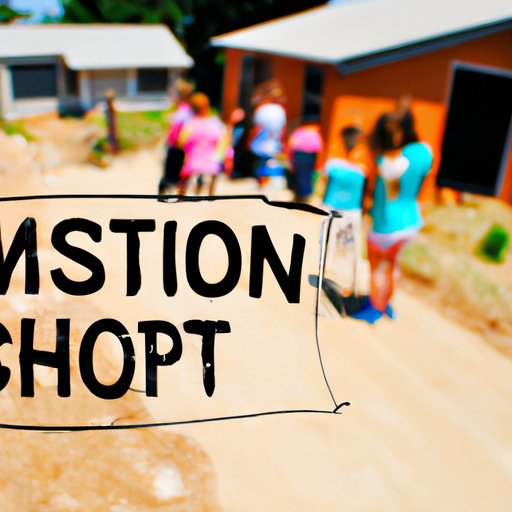
Investigating the Impact of Mission Trips on Local Communities
Mission trips can have both positive and negative impacts on local communities. Here are some of the potential effects of mission trips:
Assessing the Positive Effects of Mission Trips
Mission trips can have a variety of positive effects on local communities. For instance, mission trips can provide access to resources, increase economic development, and enhance education opportunities. In addition, mission trips can create relationships between locals and volunteers, which can foster mutual understanding and respect.
Examining the Potential Negative Impacts of Mission Trips
However, mission trips can also have negative impacts on local communities. For instance, mission trips can lead to the loss of traditional culture, diminish community autonomy, and disrupt existing social structures. To minimize these issues, mission trips should strive to empower locals and encourage self-sufficiency.
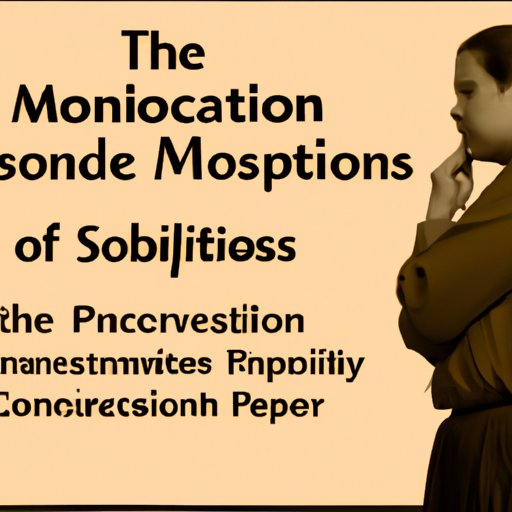
Analyzing Unintended Consequences of Missionary Work
Missionary work can also have unintended consequences, such as negative environmental impacts, unforeseen health risks, and long-term displacement of locals. To avoid these issues, mission trips should strive to create sustainable initiatives, address underlying problems, and promote self-sufficiency.
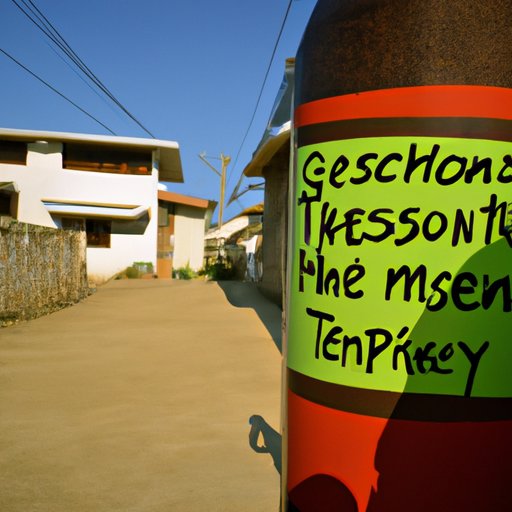
Assessing the Benefits and Challenges of Mission Trips
Overall, mission trips can be beneficial, but they can also have risks and unintended consequences. To assess the effectiveness of mission trips, it’s important to measure short-term versus long-term success, identify sustainable solutions, and consider alternative approaches.
Investigating the Effects of Short-Term Missions on Long-Term Change
To ensure lasting change, mission trips should focus on creating sustainable initiatives, establishing relationships with locals, and training local leaders. Mission trips should also strive to address underlying problems, build capacity for long-term change, and promote self-sufficiency.
Mission trips can be a powerful tool for making a difference in the world, but they can also have unintended consequences. It’s important to consider the potential benefits and drawbacks of mission trips, as well as the ethical and practical implications. Ultimately, mission trips should strive to create lasting change and empower locals, while recognizing the limitations of mission trips.
(Note: Is this article not meeting your expectations? Do you have knowledge or insights to share? Unlock new opportunities and expand your reach by joining our authors team. Click Registration to join us and share your expertise with our readers.)
Hi, I'm Happy Sharer and I love sharing interesting and useful knowledge with others. I have a passion for learning and enjoy explaining complex concepts in a simple way.
Related Post
Exploring japan: a comprehensive guide for your memorable journey, your ultimate guide to packing for a perfect trip to hawaii, the ultimate packing checklist: essentials for a week-long work trip, leave a reply cancel reply.
Your email address will not be published. Required fields are marked *
Expert Guide: Removing Gel Nail Polish at Home Safely
Trading crypto in bull and bear markets: a comprehensive examination of the differences, making croatia travel arrangements, make their day extra special: celebrate with a customized cake.
- Accessibility & Inclusivity
- Breaking News
- International
- Clubs & Orgs
- Humans of SB
- In Memoriam
- Santa Barbara
- Top Features
- Arts & Culture
- Film & TV
- Local Artists
- Local Musicians
- Student Art
- Theater & Dance
- Top A&E
- App Reviews
- Environment
- Nature of UCSB
- Nature of IV
- Top Science & Tech
- Campus Comment
- Letters to the Editor
- Meet Your Neighbor
- Top Opinions
- Illustrations
- Editorial Board
Earth Day Isla Vista – Celebrating Through Music, Nature, and Fun
In photos: men’s basketball: gauchos vs uc davis, art as a weapon against invasion – film reminds us of…, opportunity for all uc office of the president yet to make…, the top boba places in isla vista – a journey into…, getting kozy: isla vista’s newest coffee shop, a call for natural sustainability: the story and mission of the…, tasa night market 2023: fostering community and featuring budding clubs at…, in photos – daedalum luminarium, an art installation, creating characters we love: the screenwriting process in our flag means…, indigo de souza and the best-case anticlimax, a spectrum of songs: ucsb’s college of creative studies set to…, nature in i.v. – black mold, southern california is in super bloom, from love to likes: social media’s role in relationships, the gloom continues: a gray may, the rise of ai girlfriends: connecting with desires and discussing controversy,…, letter to the editor: dining hall laborers have had enough, do…, is studying abroad worth it for a ucsb student, workers at ucsb spotlight: being a writing tutor for clas, are missionaries modern colonizers.

Staff Writer
Every couple of months, I’ll notice a pattern of pictures on my Instagram feed. In some variation, the posts depict my white classmates posing with African children. The caption reads something like, “Wish I could go back to [insert developing country here],” followed by a long paragraph detailing their unforgettable experience serving others — most likely in the name of Christ. While I know such posts have good intentions, I find them frustratingly tone-deaf.
It’s an increasingly common opinion that philanthropic trips with the underlying motives of conversion are icky. These are real people, with real problems, and a couple of Americans pulling up to work on a construction project for two weeks “to save them from hell” isn’t going to make all that big of a difference.
Afterwards, they’re back in their cushy, suburban homes, posting photos with young, impoverished children as props to emphasize their righteousness and piousness. More often than not, it seems that these missionary trips are glorified exotic vacations with the bonus of self-gratification.
Religious conversion is not a new thing by any means, but nowadays, the most well-known missionaries are Christians. While there are many different reasons people follow this path, the majority cites a passage in the Bible’s “The Book of Matthew” known as “The Great Commission,” in which Jesus implores his followers to “go and make disciples of all nations.” And thus, throughout the past few centuries, numerous European nations, and more recently, America, have attempted to encourage the love of Christ in other countries.
The problem lies within the blurred lines between missionary work and the aim to “civilize,” because the language used to describe both aims is often disturbingly similar.
Take a look at this quote from the late Belgian King Leopold II, who was imploring Belgian politicians, explorers, and others to join and fund his charitable organization for the Congo : “To open to civilization the only part of our globe which it has not yet penetrated, to pierce the darkness which hangs over entire peoples, is, I dare say, a crusade worthy of this century of progress.”
“The problem lies within the blurred lines between missionary work and the aim to “civilize,” because the language used to describe both aims is often disturbingly similar.”
This spiel about saving “colored” people from their own ignorance is, at best, thinly-veiled racism — at worst, a cover for a genocidal colonization effort. As it turns out, King Leopold’s philanthropic endeavor was actually a guise for his wish to exploit Congolese workers and make big money off of rubber, which he certainly did — but only at the expense of around 10 million Congolese lives.
This is far from an exception. Colonial Europe was notorious for its treatment of non-white people, whether in India , numerous African nations, or North America. You may be familiar with the quote, “kill the Indian, save the man,” which was originally a speech that encompassed ideas about the importance of “civilizing.” Thus, “Americanizing” the Indian to assimilate them into the white man’s culture.
Such ideas were the basis of developing Christian boarding schools, notorious for cruelty for the indigenous peoples of America, Australia , Canada , and other countries undergoing colonization — all while white colonialists methodically claimed land through force.
They justified their actions by citing the “white man’s burden” — meaning, it was their duty to conquer the land to civilize the “savage” nations. Despite resistance from Indigenous populations, the presumed “saviors” subjugated them and rejected their deeply rooted beliefs as primitive without bothering to understand Indigenous culture.
While perhaps not as blatantly racist as before, missionary work today is still problematic.
There have been various mission trips where funds have been mishandled, and where missionaries ended up being more of a hassle than anything. The recipients of missionary work have to spend time painstakingly teaching their customs and their work to people who, for the most part, aren’t planning on spending a ton of time helping out.
In general, short-term volunteer work isn’t as helpful as people would like to think. The Guardian wrote of a scathing study on “aids orphan tourism” in South Africa that revealed how short-term volunteer projects lead to many harmful effects. Wealthy “voluntourists” prevent local workers from getting crucial jobs and cause hard-pressed institutions to waste money and time looking after them and abused or abandoned children form emotional attachments to visitors who exacerbate their trauma by disappearing soon after arriving.
“But missionary work is still heavily polluted by its past, in which the “help” being offered was used as a pretext to exploit a country and simultaneously feed the “white man’s burden” narrative.”
Another issue is how missionaries gravitate towards isolated tribes, in hopes of bringing them into contact with the rest of the world — and Jesus. One particularly infamous story is that of John Chau , a 26-year-old travel vlogger and evangelical missionary. He attempted to spread the gospel to the Sentinelese, the uncontacted hunter-gathers that inhabit the North Sentinel Island — the risk of deadly contagion be damned.
After a few days of attempted communication, in which he preached from Genesis and sang worship songs from a distance, he was killed. Another example is that of the Akuriyo people in Suriname — after being approached by missionaries in 1969, 40 to 50 percent of the Akuriyo population died due to respiratory diseases and what some suspect to be the stress of culture shock. In general, isolated tribes have little resistance to common illnesses, and there are historically numerous examples of catastrophic consequences when contact is forced upon them.
I’m not making the claim here that every person going on a missionary trip is an oblivious dolt doing more harm than good. Many liberal and younger missionaries have personally grappled with “white-savior” connotations and focus less exclusively on converting people. They’d instead work on doing good for the community and hope their actions speak louder than words to inspire others to join their faith, according to George Washington University professor Melani McAlister.
But good intentions aren’t always enough, especially in the case of missionary trips. The quest to save people from hell by spreading Christianity everywhere possible, even where people are reluctant, isn’t okay. Just because it’s your faith doesn’t mean it’s necessarily the right faith for everyone, and refusing to accept that is perpetuating supremacist rhetoric.
You might think I’m being too harsh here. Missionaries have admittedly done good work — they’ve acted as doctors and aid workers, built schools, hospitals, and established other important infrastructure in communities in need. Much of the younger generation is focused on helping communities without pressuring locals to convert. But missionary work is still heavily polluted by its past, in which the “help” being offered was used as a pretext to exploit a country and simultaneously feed the “white man’s burden” narrative.
The idea that people desperately need some random foreigner to save them is often harmful and frankly, narcissistic. And with all the credible international relief efforts out there, there are better ways to ease your conscience.
The problem is that there are continued overtones of colonialism that still plague the Christian missions enterprise encouraging this white savior mentality. Case in point, Amazon recently recommended this new “devotional” book entitled “Press On: What the missionary journeys of James Gribble teach us about prayer, perseverance and the ultimate prize.” The book cover displays an old photo of some white missionary dressed in colonial gear surrounded by a several “primitive” Africans. An excerpt from the book reinforces the white savior: “When I get to heaven,” he wrote, “and there see crowds of these bright faced people, perhaps I shall ask, ‘Who are these?’ And another shall reply, ‘These are those who are rescued from dark heathendom in neglected Africa.’ Oh, that He may be able to say—‘through you.’” It’s hard to believe that books like this are still being published in 2020. Book link: tinyurl.com/y33wtftl
Comments are closed.
- Science & Tech

Harmful or helpful: Exploring the ethics of missions and school trips
- Written on: November 17, 2018

Short-term missions or volunteer trips are conducted around the world with the best intentions to care for children and their families and communities. People fundraise, visit, give and serve hoping to make a difference to individuals and to the injustices in our world. Increasingly, research is suggesting that these trips can be harmful to the countries being visited. This research has raised questions like:
- What are harms done to children in orphanages by visiting volunteers?
- How have short-term teams created a culture of dependency, disillusionment and dis-empowerment in the countries they seek to serve?
- What prejudices and stereotypes of “poor people” are reinforced by taking people from wealthy nations on overseas mission trips?
- Why have studies shown that high-school mission trips have no lasting impact on rates of adult volunteering or giving?
These questions, and others, were the basis of a leadership forum that the Rok Kern team hosted in Adelaide, Australia earlier this year. We partnered with Interserve Australia , ACCIR , TEAR Australia and Tabor Adelaide to explore what it means to do ethical missions and short-term trips with leadership from South Australian Christian schools and churches.

The harms of volunteering overseas
Each year, millions of Christians travel the world, seeking to put their faith into action. They seek to follow Jesus’ example of caring for the poor, the outcast and the marginalized. However research into the effects of these trips, consistently highlights the harm done from these trips to the host-country and the lack of long-term change in the people travelling overseas. This suggests that simply seeking to serve or help others is not enough. The Christian call to love others needs to be acted upon in a way which honors the lives of those being visited. It needs to see them as people too, not just objects of charity. The leadership forum was a chance for us to to look at the research surrounding volunteering overseas and to explore our response. It is important that we Christians – who have grown up in countries where poverty is often pushed to the edges and unseen – reflect on our own assumptions and desires to help before striving to put our faith into action in places where poverty is more open and confronting.

Why is Children in Families talking about the harms of volunteering?
Children in Families (CIF) is passionate about seeing children grow up in families. We believe it is where they belong. But research shows that approximately 16,000 children are growing up in Orphanages in Cambodia . At least 90% of those children have families who could raise them in healthy environments, given the support to do so. Families have been led to believe that the children will have better outcomes by being raised outside of their families. And so they place them in orphanages. As we explored in our Anne with an E series , the research is very clear that this is not the case.
The demand for children growing up in orphanages is being driven by people in wealthier nations. They are seeking to support vulnerable children and to visit and interact with them during mission or school trips. Up to 15% of Australian school s visit or fund-raise for orphanages and 52% of Christians in Australia financially support orphanages. The leadership forum was one way that the CIF Rok Kern team can engage with these groups about the harm these visits do to.
Can’t volunteering be beneficial?
CIF believes there is a role for foreign volunteers (one of our volunteers is writing this blog post after all). We believe that volunteering works best when the volunteer has skills in a particular area and is familiar with the culture. Also, they can work with our staff to improve our practices, ensuring that all the children in CIF care get the best support possible. That is why most of our volunteers do not do any direct work with clients. Instead, we support and work with our Khmer staff to help them do their work in the culture they know best.

The Rok Kern alternative
However, we also passionately believe that there is a role for short-term teams and trips. When teams see trips as a way to learn from Cambodians about their lives and the work they are doing living out the gospel, the trips help both the people coming and organizations like CIF. The Rok Kern program takes the latest research into best practice with teams. Working with schools and churches, we create a study tour that is focused on learning from Cambodians about Cambodia. We explore some of the complexities around development and mission. And we equip participants to “seek justice, love mercy and walk humbly” in their own lives. Our goal is for participants to understand the harm of orphanages and to experience why family-based care is a feasible and effective model for caring for vulnerable children. It was this research that we explored with our forum participants, reflecting on their current trip experiences and proposing a framework for evaluating their visit.
Hope for change

It was a great privilege to meet with school and church leaders who want to be part of changing how the next generation engages with missions and caring for vulnerable children. Questioning popular models of missions and volunteering takes courage and humility. And willingness to wrestle with some of the complexities. We were encouraged that each participant was willing to do so. Our participants had this to say about the forum:
“It is incredible how some organisations use good will and the best of human nature for their financial betterment. Thank you for exposing the truth behind the volunteering industry.”
“There was a lot of practical advice on how to ensure that the trip we are conducting will see a lasting impact in our student’s lives. […I learnt that] there needs to be a strong connection with the students lives back home when in-country so that they see lasting difference in the way they approach their lives.”
“The leadership forum gave me a better understanding as to how to make sure that our trips are ethical and run well.”
Mike, from TEAR Australia, has many years experience conducting teams and overseeing development projects. TEAR have spent many years exploring the ethics around team visits and how to support communities to grow and thrive. Mike had this to say about the forum:
“I think Rok Kern is addressing critical issues that schools and churches facilitating mission and service trips need to consider. Team visits to poor communities overseas, conducted well, can present an invaluable opportunity to learn about the richness of other cultures, the nature and impact of systemic injustice, local resilience and resourcefulness, and opportunities for positive partnerships between Australians and international communities. Conducted badly, team visits can reinforce an unhelpful myth of western superiority and promote damaging paternalistic interventions into the lives of the poor. Rok Kern does a great job of helping people to understand the difference between these two approaches.”
An invitation
Would you like to find out more about the ethics of short-term mission trips? Or about the harms caused by volunteering in orphanages? Would you like tools and research to explore these issues more deeply? We are hosting a webinar in January to explore these issues more. We would love to have you be part of it. To register, please click here

Children in Families exists to place vulnerable children in loving families.
Unit #275, Street 41BT Sangkat Boeng Tumpun, Khan Meanchey, Phnom Penh Kingdom of Cambodia 12351
Find us on Google Maps
Quick Links
- Our Vision and Mission
- Our Latest News
- Our Social Media News
- Rok Kern – Discover Cambodia
- Rok Kern Learning Academy
- Church Partnerships
- Domestic Adoption
- Emergency Care
- Foster Care
- Kinship Care
Join With Us
- Become a Foster Family
- Become a CIF Family-Based Care Advocate
© 2006-2024 – Children in Families is a local Christian non-profit registered in the Kingdom of Cambodia. | Privacy Policy | Webmaster All photos on this site are a mixture of stock photos and photos of clients used with consent.
- Family Discipleship
- Apologetics
- Entertainment
Harmful Mission Trips
How short terms missions hurts orphans, november 26, 2018.
Short term missions trip are en vogue for American churches looking for something to do for their teens (and hoping they might just get saved on the trip). But, now a new campaign is trying to stop these “harmful” missions trips to orphanages especially. What’s the first requirement for missions, before anybody even thinks about going on a missions trip? We lay down the most essential pre-requisite. And, also we offer general principles for charitable giving for missions and international needs.
About Your Host, Kevin Swanson
Homeschooled himself in the 1960's and 70's, Kevin Swanson and his wife, Brenda, are now homeschooling their five children. Since graduating from his homeschool and then serving as student body president of a large west coast university, he has gone on to other leadership positions in corporate management, church, and other non-profits.
Previous Program
Next program, recommended products.
© Copyright 2008 - 2024 Generations. All rights reserved.
8 Reasons Why You Should Visit Moscow At Least Once in Your Lifetime

Contributor / Journalist
The city of Moscow is the largest historical, cultural, and administrative city in the entire Russian Federation. The capital of the most gigantic country on the planet is considered to be quite fast, lively, crowded, and mystical with its various historical neighbourhoods and hidden gems . The streets here are quite busy, and the traffic is tough; weather conditions might vary from cold to hot, and you can never predict it. Despite these climate conditions, the city remains an amazing and a picturesque one, and there are definitely a whole host of reasons to come here at least once in a lifetime. Here are the top eight, so you can start planning your trip now.
Traditional architecture.
The capital of Russia is famous for its enormous streets and neighbourhoods full of different historical, Soviet , Post-Soviet and modern buildings. Various architectural styles might catch your eye literally on every corner, and each of them represents a traditional Moscow style that remained for decades, if not centuries.
https://www.instagram.com/p/BemG-Zcl_vg/?tagged=redsquare
The Moscow theatre scene

Become a Culture Tripper!
Sign up to our newsletter to save up to 500$ on our unique trips..
See privacy policy .
https://www.instagram.com/p/Bc2EClkB1cE/?taken-by=bolshoi_theatre
Art galleries and museums
The city of Moscow is famous for its extensive and impressive art scene and offers its visitors a wide number of historical museums, galleries and modern art and photography centres, along with workshop halls and art shops and corners . Many of these places provide its visitors with access to unique and important art collections and an entrance to different exhibitions, art events and fairs organized in the city monthly.

Nature and parks
The city of Moscow hosts an abundance of different parks, orangeries and small squares with a great number of local plants and trees. These beautiful nature and recreation spots have become real gems of the city for its residents.
https://www.instagram.com/p/Be2pu8PBWW5/?tagged=%D0%BF%D0%B0%D1%80%D0%BA%D0%B3%D0%BE%D1%80%D1%8C%D0%BA%D0%BE%D0%B3%D0%BE
Orthodox churches
The Moscow region has around 830 Orthodox churches , monasteries and chapels. You may view these religious architectural masterpieces in every single neighbourhood of the city. The majority of these places are open daily to visitors, and each of them has a unique collection of religious paintings of Orthodox saints.
https://www.instagram.com/p/Be2tDDnBfBJ/?tagged=%D1%85%D1%80%D0%B0%D0%BC%D1%85%D1%80%D0%B8%D1%81%D1%82%D0%B0%D1%81%D0%BF%D0%B0%D1%81%D0%B8%D1%82%D0%B5%D0%BB%D1%8F
Picturesque city views
The city of Moscow is famous for its huge number of high points and spectacular city views from various neighbourhoods. One of the most popular observation points nowadays is the ‘Federation Tower’ located in the Moscow City business area; however, it’s just one of the many places where you can take a beautiful picture and view the sunset. We highly recommend it!
https://www.instagram.com/p/BelCnVdlidq/?tagged=federationtower
Russian cuisine
Russia offers its visitors an enormous variety of traditional dishes . Some of them are considered to be real culinary masterpieces. Only in Moscow you can find many restaurants featuring national cuisine, ranging from budget to Michelin-starred.
https://www.instagram.com/p/BWIG3n3AnxN/?taken-by=whiterabbitmoscow
Moscow’s nightlife
‘Moscow never sleeps!’ – that’s what locals say about the city, and this is 100% true. Moscow’s nightlife is very fun, never-ending and just might get you quite tipsy. Local clubs, bars and dance halls provide many interesting options to its guests even on a Monday night.
https://www.instagram.com/p/Bdcvp3YDiuA/?taken-by=shop_bar_ds

KEEN TO EXPLORE THE WORLD?
Connect with like-minded people on our premium trips curated by local insiders and with care for the world
Since you are here, we would like to share our vision for the future of travel - and the direction Culture Trip is moving in.
Culture Trip launched in 2011 with a simple yet passionate mission: to inspire people to go beyond their boundaries and experience what makes a place, its people and its culture special and meaningful — and this is still in our DNA today. We are proud that, for more than a decade, millions like you have trusted our award-winning recommendations by people who deeply understand what makes certain places and communities so special.
Increasingly we believe the world needs more meaningful, real-life connections between curious travellers keen to explore the world in a more responsible way. That is why we have intensively curated a collection of premium small-group trips as an invitation to meet and connect with new, like-minded people for once-in-a-lifetime experiences in three categories: Culture Trips, Rail Trips and Private Trips. Our Trips are suitable for both solo travelers, couples and friends who want to explore the world together.
Culture Trips are deeply immersive 5 to 16 days itineraries, that combine authentic local experiences, exciting activities and 4-5* accommodation to look forward to at the end of each day. Our Rail Trips are our most planet-friendly itineraries that invite you to take the scenic route, relax whilst getting under the skin of a destination. Our Private Trips are fully tailored itineraries, curated by our Travel Experts specifically for you, your friends or your family.
We know that many of you worry about the environmental impact of travel and are looking for ways of expanding horizons in ways that do minimal harm - and may even bring benefits. We are committed to go as far as possible in curating our trips with care for the planet. That is why all of our trips are flightless in destination, fully carbon offset - and we have ambitious plans to be net zero in the very near future.

A Guide to Cautionary Russian Proverbs and What They Mean

The Soviet Union’s Best Heart-Throbs and Pinups

Guides & Tips
A 48 hour guide to astrakhan, russia.

Zhenotdel: The Soviet Union's Feminist Movement

Unusual Facts About the Soviet Union

A Soviet Pilot Went Missing in Afghanistan and Was Found 30 Years Later

Food & Drink
The best halal restaurants in kazan.

Russian Last Names and Their Meanings

The Mystery Behind Russia's Buddhist "Miracle"

Incredible Photos From the Longest Bike Race in the World

See & Do
Russia's most remote holiday destinations.

Restaurants
The best halal restaurants in kaliningrad.
- Post ID: 1825837
- Sponsored? No
- View Payload
Is It Safe in Moscow?
:max_bytes(150000):strip_icc():format(webp)/RussianKerry2-56a39e8d5f9b58b7d0d2ca8c.jpg)
Stanislav Solntsev / Getty Images
When you visit Moscow , Russia, you’re seeing one of the world’s largest, and most expensive, capital cities . While there is a history of violent crime against foreign journalists and aid personnel in Russia, a trip to Moscow is usually safe for mainstream travelers. Most tourists in Moscow only face potential issues with petty crime, though terrorism is also a concern. Visitors should stick to the principal tourist areas and abide by the local security advice.
Travel Advisories
- The U.S. Department of State urges travelers to avoid travel to Russia because of COVID-19 and to "exercise increased caution due to terrorism, harassment, and the arbitrary enforcement of local laws."
- Anyone exploring more of Russia should avoid "The North Caucasus, including Chechnya and Mount Elbrus, due to terrorism, kidnapping, and risk of civil unrest." Also, travelers should stay away from "Crimea due to Russia’s occupation of the Ukrainian territory and abuses by its occupying authorities."
- Canada states travelers should use a high degree of caution in Russia due to the threat of terrorism and crime.
Is Moscow Dangerous?
The Moscow city center is typically safe. In general, the closer you are to the Kremlin , the better. Travelers mainly need to be aware of their surroundings and look out for petty crime. Be especially careful in tourist areas such as Arbat Street and crowded places like the Moscow Metro transit system. The suburbs are also generally fine, though it is advised to stay away from Maryino and Perovo districts.
Terrorism has occurred in the Moscow area, leading authorities to increase security measures. Be more careful at tourist and transportation hubs, places of worship, government buildings, schools, airports, crowds, open markets, and additional tourist sites.
Pickpockets and purse snatching happen often in Russia, perpetrated by groups of children and teenagers who distract tourists to get their wallets and credit cards. Beware of people asking you for help, who then trick you into their scheme. Don’t expect a backpack to be a safe bag bet; instead, invest in something that you can clutch close to your body or purchase a money belt . Always diversify, storing some money in a separate location so that if you are pickpocketed, you'll have cash elsewhere. Keep an eye out for thieves in public transportation, underground walkways, tourist spots, restaurants, hotel rooms and homes, restaurants, and markets.
Is Moscow Safe for Solo Travelers?
Large cities like Moscow in Russia are overall fairly safe if you are traveling alone, and the Moscow Metro public transit is a secure and easy way to get around. But it is still a good idea to follow basic precautions as in any destination. Avoid exploring alone at night, especially in bad areas. You may want to learn some basic Russian phrases or bring a dictionary, as many locals don't speak English. However, in case you need any help, there are tourist police that speak English. Also, exploring with other trusted travelers and locals or on professional tours is often a good way to feel safe.
Is Moscow Safe for Female Travelers?
Catcalling and street harassment are infrequent in Moscow and the rest of Russia and females traveling alone don't usually have problems. There are plenty of police officers on the streets as well. Still, it serves to stick to Moscow's well-lit, public areas, avoid solo night walks, and use your instincts. Women frequenting bars may take receive some friendly attention. Females can wear whatever they want, but those entering Orthodox churches will be required to cover up. Though women in Russia are independent, domestic violence and other inequality issues take place regularly.
Safety Tips for LGBTQ+ Travelers
Russia is not known as a gay-friendly country. However, Moscow is one of the more welcoming cities with a blooming LGBTQ+ community and many friendly restaurants, bars, clubs, and other venues. Hate crimes in Russia have increased since the 2013 anti-gay propaganda law. Openly LGBTQ+ tourists in this conservative country may experience homophobic remarks, discrimination, or even violence, especially if traveling with a partner. Also, while women hold hands or hug publicly—whether romantically involved or not—men should avoid public displays of affection to prevent being insulted or other issues.
Safety Tips for BIPOC Travelers
Moscow and other big cities in Russia have sizable populations of various cultures, so discrimination against BIPOC travelers is rarer than in other parts of the country where it can become dangerous. Some people living in Russia who are Black, Asian, Jewish, and from other backgrounds have experienced racial discrimination and violence. Tourists won't usually experience overt racism but may be the recipients of some stares. If anyone should bother you, be polite and resist being taunted into physically defending yourself.
Safety Tips for Travelers
Travelers should consider the following general tips when visiting:
- It's best not to drink the tap water. If you do, boil it before drinking, though showering is safe and the amount used to brush teeth is generally not harmful. Mineral water is widely drunk, especially at restaurants, and if you prefer not to have it carbonated ask for “ voda byez gaz” (water without gas).
- If you need emergency assistance in case of fire, terrorism, medical issues, or more, dial 112 in Russia for bilingual operators.
- Be judicious about taking photographs, especially of police or officials. This can potentially bring unwanted attention to yourself by members of law enforcement who won’t mind asking to see your passport. Also avoid snapping photos of official-looking buildings, such as embassies and government headquarters.
- Carry your passport in as secure a manner as possible. If you get stopped for any reason by the police, they can fine or arrest you if you don't have the document with you. Also, keep photocopies of your passport, the page on which your travel visa appears, and any other documents that relate to your stay in Russia.
- Use official taxis only and steer clear of illegal taxi companies, especially at night. Ask your hotel to call a reputable taxi company.
U.S. Department of State. " Russia Travel Advisory ." August 6, 2020.
Government of Canada. " Official Global Travel Advisories ." November 19, 2020.
Is It Safe in Peru?
Is It Safe in Barbados?
Is It Safe in Rio de Janeiro?
Is It Safe in Guatemala?
Is It Safe in Egypt?
Is It Safe in Jamaica?
Is It Safe in Colombia?
Is It Safe in Sweden?
Is It Safe in Germany?
Is It Safe in Iceland?
Is It Safe in Mexico?
Is It Safe in Puerto Rico?
Is It Safe in Russia?
Is It Safe in Amsterdam?
Is It Safe in Thailand?
2020 Travel Warnings for Countries in Africa
2018 Primetime Emmy & James Beard Award Winner
R&K Insider
Join our newsletter to get exclusives on where our correspondents travel, what they eat, where they stay. Free to sign up.
A History of Moscow in 13 Dishes
Featured city guides.

The Comprehensive Guide to Moscow Nightlife
- Posted on April 14, 2018 July 26, 2018
- by Kings of Russia
- 8 minute read

Moscow’s nightlife scene is thriving, and arguably one of the best the world has to offer – top-notch Russian women, coupled with a never-ending list of venues, Moscow has a little bit of something for everyone’s taste. Moscow nightlife is not for the faint of heart – and if you’re coming, you better be ready to go Friday and Saturday night into the early morning.
This comprehensive guide to Moscow nightlife will run you through the nuts and bolts of all you need to know about Moscow’s nightclubs and give you a solid blueprint to operate with during your time in Moscow.
What you need to know before hitting Moscow nightclubs
Prices in moscow nightlife.
Before you head out and start gaming all the sexy Moscow girls , we have to talk money first. Bring plenty because in Moscow you can never bring a big enough bankroll. Remember, you’re the man so making a fuzz of not paying a drink here or there will not go down well.
Luckily most Moscow clubs don’t do cover fees. Some electro clubs will charge 15-20$, depending on their lineup. There’s the odd club with a minimum spend of 20-30$, which you’ll drop on drinks easily. By and large, you can scope out the venues for free, which is a big plus.
Bottle service is a great deal in Moscow. At top-tier clubs, it starts at 1,000$. That’ll go a long way with premium vodka at 250$, especially if you have three or four guys chipping in. Not to mention that it’s a massive status boost for getting girls, especially at high-end clubs.
Without bottle service, you should estimate a budget of 100-150$ per night. That is if you drink a lot and hit the top clubs with the hottest girls. Scale down for less alcohol and more basic places.
Dress code & Face control
Door policy in Moscow is called “face control” and it’s always the guy behind the two gorillas that gives the green light if you’re in or out.
In Moscow nightlife there’s only one rule when it comes to dress codes:
You can never be underdressed.
People dress A LOT sharper than, say, in the US and that goes for both sexes. For high-end clubs, you definitely want to roll with a sharp blazer and a pocket square, not to mention dress shoes in tip-top condition. Those are the minimum requirements to level the playing field vis a vis with other sharply dressed guys that have a lot more money than you do. Unless you plan to hit explicit electro or underground clubs, which have their own dress code, you are always on the money with that style.
Getting in a Moscow club isn’t as hard as it seems: dress sharp, speak English at the door and look like you’re in the mood to spend all that money that you supposedly have (even if you don’t). That will open almost any door in Moscow’s nightlife for you.
Types of Moscow Nightclubs
In Moscow there are four types of clubs with the accompanying female clientele:
High-end clubs:
These are often crossovers between restaurants and clubs with lots of tables and very little space to dance. Heavy accent on bottle service most of the time but you can work the room from the bar as well. The hottest and most expensive girls in Moscow go there. Bring deep pockets and lots of self-confidence and you have a shot at swooping them.
Regular Mid-level clubs:
They probably resemble more what you’re used to in a nightclub: big dancefloors, stages and more space to roam around. Bottle service will make you stand out more but you can also do well without. You can find all types of girls but most will be in the 6-8 range. Your targets should always be the girls drinking and ideally in pairs. It’s impossible not to swoop if your game is at least half-decent.
Basic clubs/dive bars:
Usually spots with very cheap booze and lax face control. If you’re dressed too sharp and speak no Russian, you might attract the wrong type of attention so be vigilant. If you know the local scene you can swoop 6s and 7s almost at will. Usually students and girls from the suburbs.
Electro/underground clubs:
Home of the hipsters and creatives. Parties there don’t mean meeting girls and getting drunk but doing pills and spacing out to the music. Lots of attractive hipster girls if that is your niche. That is its own scene with a different dress code as well.

What time to go out in Moscow
Moscow nightlife starts late. Don’t show up at bars and preparty spots before 11pm because you’ll feel fairly alone. Peak time is between 1am and 3am. That is also the time of Moscow nightlife’s biggest nuisance: concerts by artists you won’t know and who only distract your girls from drinking and being gamed. From 4am to 6am the regular clubs are emptying out but plenty of people, women included, still hit up one of the many afterparty clubs. Those last till well past 10am.
As far as days go: Fridays and Saturdays are peak days. Thursday is an OK day, all other days are fairly weak and you have to know the right venues.
The Ultimate Moscow Nightclub List
Short disclaimer: I didn’t add basic and electro clubs since you’re coming for the girls, not for the music. This list will give you more options than you’ll be able to handle on a weekend.
Preparty – start here at 11PM
Classic restaurant club with lots of tables and a smallish bar and dancefloor. Come here between 11pm and 12am when the concert is over and they start with the actual party. Even early in the night tons of sexy women here, who lean slightly older (25 and up).
The second floor of the Ugolek restaurant is an extra bar with dim lights and house music tunes. Very small and cozy with a slight hipster vibe but generally draws plenty of attractive women too. A bit slower vibe than Valenok.
Very cool, spread-out venue that has a modern library theme. Not always full with people but when it is, it’s brimming with top-tier women. Slow vibe here and better for grabbing contacts and moving on.

High-end: err on the side of being too early rather than too late because of face control.
Secret Room
Probably the top venue at the moment in Moscow . Very small but wildly popular club, which is crammed with tables but always packed. They do parties on Thursdays and Sundays as well. This club has a hip-hop/high-end theme, meaning most girls are gold diggers, IG models, and tattooed hip hop chicks. Very unfavorable logistics because there is almost no room no move inside the club but the party vibe makes it worth it. Strict face control.
Close to Secret Room and with a much more favorable and spacious three-part layout. This place attracts very hot women but also lots of ball busters and fakes that will leave you blue-balled. Come early because after 4am it starts getting empty fast. Electronic music.
A slightly kitsch restaurant club that plays Russian pop and is full of gold diggers, semi-pros, and men from the Caucasus republics. Thursday is the strongest night but that dynamic might be changing since Secret Room opened its doors. You can swoop here but it will be a struggle.

Mid-level: your sweet spot in terms of ease and attractiveness of girls for an average budget.
Started going downwards in 2018 due to lax face control and this might get even worse with the World Cup. In terms of layout one of the best Moscow nightclubs because it’s very big and bottle service gives you a good edge here. Still attracts lots of cute girls with loose morals but plenty of provincial girls (and guys) as well. Swooping is fairly easy here.
I haven’t been at this place in over a year, ever since it started becoming ground zero for drunken teenagers. Similar clientele to Icon but less chic, younger and drunker. Decent mainstream music that attracts plenty of tourists. Girls are easy here as well.
Sort of a Coyote Ugly (the real one in Moscow sucks) with party music and lots of drunken people licking each others’ faces. Very entertaining with the right amount of alcohol and very easy to pull in there. Don’t think about staying sober in here, you’ll hate it.
Artel Bessonitsa/Shakti Terrace
Electronic music club that is sort of a high-end place with an underground clientele and located between the teenager clubs Icon and Gipsy. Very good music but a bit all over the place with their vibe and their branding. You can swoop almost any type of girl here from high-heeled beauty to coked-up hipsters, provided they’re not too sober.
Afterparty: if by 5AM you haven’t pulled, it’s time to move here.
Best afterparty spot in terms of trying to get girls. Pretty much no one is sober in there and savage gorilla game goes a long way. Lots of very hot and slutty-looking girls but it can be hard to tell apart who is looking for dick and who is just on drugs but not interested. If by 9-10am you haven’t pulled, it is probably better to surrender.
The hipster alternative for afterparties, where even more drugs are in play. Plenty of attractive girls there but you have to know how to work this type of club. A nicer atmosphere and better music but if you’re desperate to pull, you’ll probably go to Miks.
Weekday jokers: if you’re on the hunt for some sexy Russian girls during the week, here are two tips to make your life easier.
Chesterfield
Ladies night on Wednesdays means this place gets pretty packed with smashed teenagers and 6s and 7s. Don’t pull out the three-piece suit in here because it’s a “simpler” crowd. Definitely your best shot on Wednesdays.
If you haven’t pulled at Chesterfield, you can throw a Hail Mary and hit up Garage’s Black Music Wednesdays. Fills up really late but there are some cute Black Music groupies in here. Very small club. Thursday through Saturday they do afterparties and you have an excellent shot and swooping girls that are probably high.
Shishas Sferum
This is pretty much your only shot on Mondays and Tuesdays because they offer free or almost free drinks for women. A fairly low-class club where you should watch your drinks. As always the case in Moscow, there will be cute girls here on any day of the week but it’s nowhere near as good as on the weekend.

In a nutshell, that is all you need to know about where to meet Moscow girls in nightlife. There are tons of options, and it all depends on what best fits your style, based on the type of girls that you’re looking for.
Related Topics
- moscow girls
- moscow nightlife

The Top 3 Cities in Ukraine for First Timers
- Posted on July 7, 2018 August 4, 2019
You May Also Like

- Uncategorized
The Best Expat Blogs for Moscow
- Posted on May 31, 2020 June 1, 2020

Finding a Russian Bride: How and Where to Meet Her
- Posted on August 9, 2019 August 9, 2019
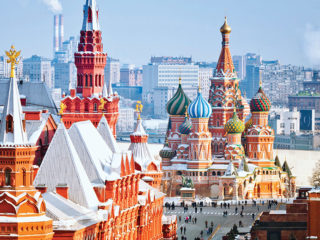
Meeting Women in Moscow: Dating Perspectives on the World’s Most Beautiful Women
- Posted on August 5, 2019 August 9, 2019

Meeting Russian Women: Top 5 Locations
- Posted on August 3, 2019 June 1, 2020
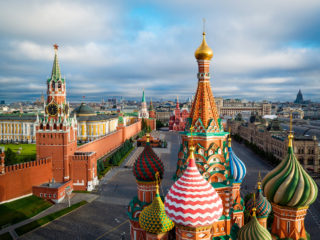
Moscow vs St. Petersburg – Which One to Visit?
- Posted on July 31, 2019 August 3, 2019

Hot Russian Girls – Where to Find & Date Them
- Posted on March 30, 2019 March 30, 2019
A Guide to Teaching English in Russia
- Posted on August 11, 2018 October 9, 2019

How to Attract Russian Girls
- Posted on July 15, 2018 August 4, 2019
Leave a Reply Cancel reply
Your email address will not be published. Required fields are marked *
Input your search keywords and press Enter.

IMAGES
VIDEO
COMMENTS
Why Mission Trips Often Fail to Alleviate Poverty. I think a lot of people are under the illusion - my past self included - that short-term mission trips to developing countries will solve a problem or "fix" things. In most cases, we have good intentions and want to be helpful. But what we don't realize is the following: 1. Poverty is ...
Mission trips that are done right are not bad, because they carry out God's mission for the world and transform lives by introducing participants to what it's like as a missionary, spread the gospel, and build relationships. The real heart behind all mission trips, whether short or long term, is to spread the gospel to every tribe, tongue ...
Mission trips may seem like the answer to this call since they involve helping people in poor conditions, but they are not as humanitarian or selfless as they seem. They are typically self-serving, racist and can even be directly harmful to the people in the regions these trips go to. It's important to understand the connection between ...
1. Dependency on Aid. One of the significant negative effects of mission trips can be the unintentional creation of dependency on outside aid. When communities become reliant on short-term assistance, they may not develop the self-sufficiency needed to address their long-term challenges. To mitigate this, mission organizations should prioritize ...
Mission trips can also raise ethical considerations, such as whether they are perpetuating harmful stereotypes or exploiting vulnerable communities. It's important for individuals and organizations to carefully consider these factors and take steps to minimize any negative impact.
Anna Nonaka and Ava Arshadi are students in the School of Dentistry, Class of 2018. In a world of over 7.1 billion individuals, approximately 400 million people lack access to healthcare. As interest in global health continuously grows, the number of health-oriented mission trips has skyrocketed. While the intent of mission trips is to treat a ...
The oath has six principles: 1. Never do for the poor what they have or could have the capacity to do for themselves. 2. Limit one way giving to emergency situations. 3. Strive to empower the poor through employment, lending, and investing, using grants sparingly to reinforce achievements. 4.
It also helps us make sure folks are using their gifts and talents to serve our partners in a way that provide a lasting impact and not simply a short-term fix. So whether the trip is a serving trip to Haiti with Mission of Hope, a teaching trip to Central Africa with ALARM, or an evangelism trip to Ethiopia with E3 Partners, the plan and focus ...
While mission trips can be "toxic" and counterproductive, when well thought out and planned properly they can be a great investment not only in the Church in the developing world, but also in ...
In high school, these trips open students' eyes to the reality of poverty outside of our comfortable world of technology and instant gratification. Through mission trips, Christians help at-risk communities in very practical ways: building houses, sharing Christ, and — through our insight and technology — bringing hope to people in deep need.
It is good and biblical to respond to the needs of other people, however, you have to learn to respond appropriately to their needs. So, mission trips can be both helpful, and hurtful, and you need to use wisdom to learn the difference. In this post, we will explore what the Bible says about missions, and what it looks like to practically ...
Mission trips can have both positive and negative effects, depending on the context and approach taken. On the one hand, mission trips can be beneficial by providing access to resources, creating economic development opportunities, and fostering relationships with locals. On the other hand, mission trips can also have unintended consequences ...
The 20-year-old ministry had teams stuck in Haiti and canceled more than 50 trips to Nicaragua that were scheduled for 2018 and early 2019. "We've canceled everything from now until we don't ...
There have been various mission trips where funds have been mishandled, and where missionaries ended up being more of a hassle than anything. ... The idea that people desperately need some random foreigner to save them is often harmful and frankly, narcissistic. And with all the credible international relief efforts out there, there are better ...
Harmful or helpful: Exploring the ethics of missions and school trips. Short-term missions or volunteer trips are conducted around the world with the best intentions to care for children and their families and communities. People fundraise, visit, give and serve hoping to make a difference to individuals and to the injustices in our world.
November 26, 2018. Short term missions trip are en vogue for American churches looking for something to do for their teens (and hoping they might just get saved on the trip). But, now a new campaign is trying to stop these "harmful" missions trips to orphanages especially. What's the first requirement for missions, before anybody even ...
Ever considered a mission trip but worried about the impact? This video explores how short-term Christian mission trips, done right, can be a powerful force ...
Additionally, STMs can be genuinely harmful to discipleship if missionaries do not work carefully alongside native churches. They may even unintentionally subvert the efforts of the native church. ... I went on four missions trips, 7-12 days long, to the Dominican Republic in the early 2010s, and they absolutely were life-changing experiences.
Culture Trip launched in 2011 with a simple yet passionate mission: to inspire people to go beyond their boundaries and experience what makes a place, its people and its culture special and meaningful — and this is still in our DNA today. We are proud that, for more than a decade, millions like you have trusted our award-winning ...
While there is a history of violent crime against foreign journalists and aid personnel in Russia, a trip to Moscow is usually safe for mainstream travelers. Most tourists in Moscow only face potential issues with petty crime, though terrorism is also a concern. Visitors should stick to the principal tourist areas and abide by the local ...
1: Off-kilter genius at Delicatessen: Brain pâté with kefir butter and young radishes served mezze-style, and the caviar and tartare pizza. Head for Food City. You might think that calling Food City (Фуд Сити), an agriculture depot on the outskirts of Moscow, a "city" would be some kind of hyperbole. It is not.
Moscow nightlife starts late. Don't show up at bars and preparty spots before 11pm because you'll feel fairly alone. Peak time is between 1am and 3am. That is also the time of Moscow nightlife's biggest nuisance: concerts by artists you won't know and who only distract your girls from drinking and being gamed.